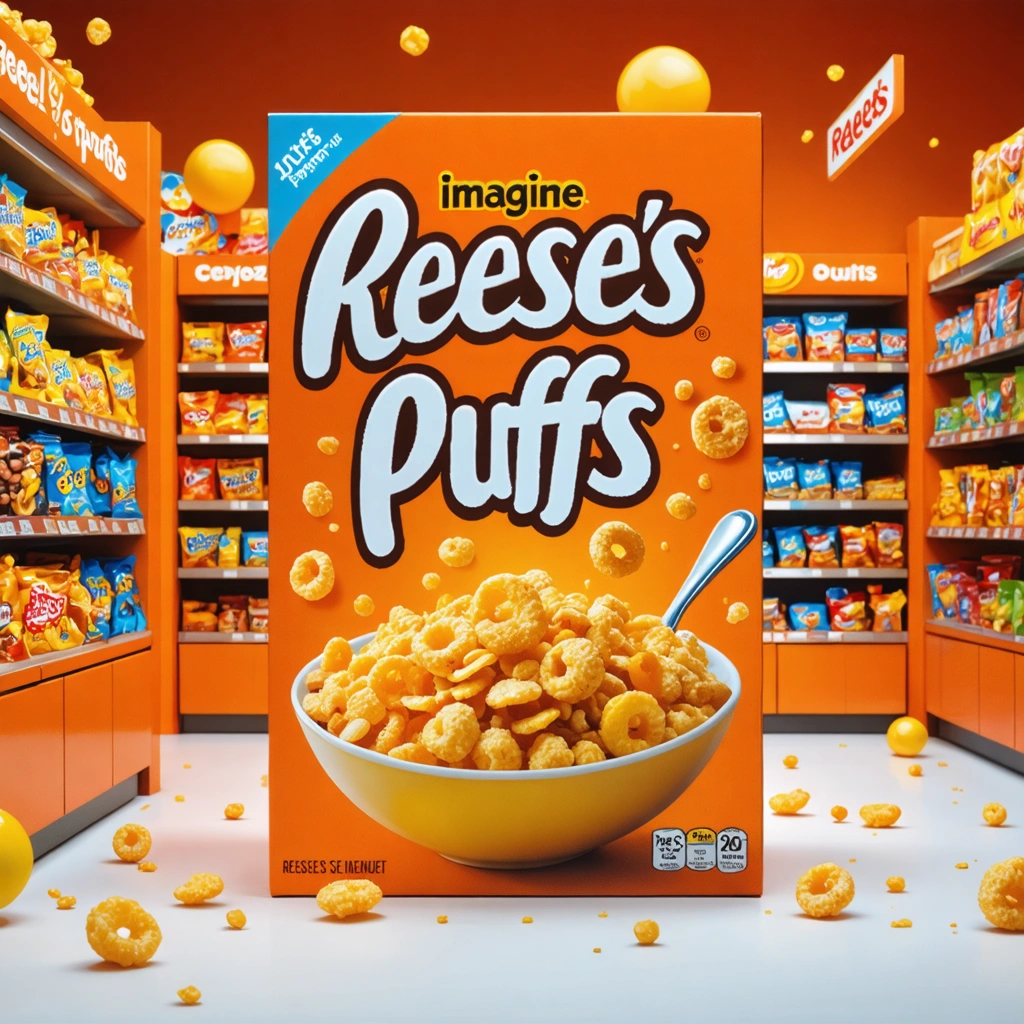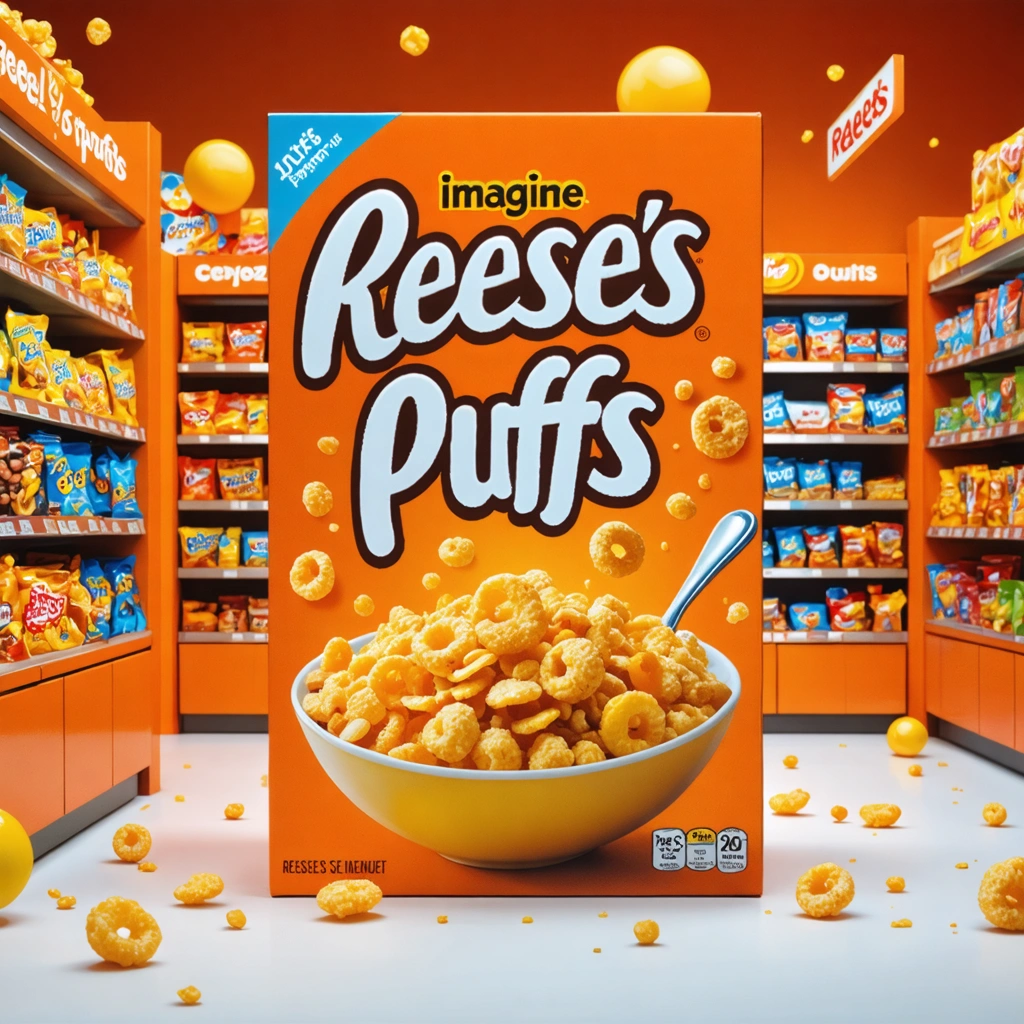The Marketing Strategy of Reese’s Puffs Collaborations: Reese’s Puffs leverages pop culture collabs to stay relevant with younger audiences.

Why Staying Fresh Matters More Than Ever in the Cereal Aisle
Walk down the cereal aisle today, and you’re greeted with a kaleidoscope of colors, mascots, and promises of the “best breakfast ever.” Among these, the Reese's Puffs box stands out with its iconic orange-and-brown palette and the unmistakable Reese's Puffs logo that instantly triggers cravings for that peanut butter and chocolate combo. But here’s the catch: in a world where Gen Z and millennials consume media at lightning speed and crave authenticity, even a beloved brand like Reese’s Puffs can’t rest on legacy alone. The cereal market, once dominated by simple jingles and cartoon characters, now demands innovation that speaks directly to younger consumers' cultural pulse.
Think about it—how often do you find yourself skipping past traditional Reese's ads on TV, or quickly glossing over the familiar Reese's character on packaging? The challenge is clear: how does a brand with such a well-established identity continue to captivate an audience that’s bombarded with content and constantly chasing the next trend?
When Classic Meets Cool: The Rise of Pop Culture Collaborations
It’s no secret that the answer lies in collaboration. Reese’s Puffs has cleverly embraced pop culture partnerships, transforming its presence from just another cereal box on the shelf into a cultural statement. Collaborations like the kaws Reese's Puffs limited-edition release have done more than just boost sales; they’ve created buzzworthy moments that ripple across social media and streetwear communities alike.
By teaming up with artists, designers, and even other iconic brands—such as the intriguing Reese’s and Cadbury crossover rumors swirling in confectionery circles—Reese’s Puffs taps into a deeper narrative. These partnerships don’t just slap a new image on the cereal; they weave Reese’s into the fabric of youth culture, turning breakfast into a lifestyle choice.
This approach mirrors successful campaigns like the Reese's Caramel Big Cup commercial, which blended indulgence and nostalgia in a way that resonated emotionally with audiences. Whether it’s through innovative flavors, eye-catching packaging, or storytelling-driven ads, Reese’s Puffs keeps evolving its outreach to meet the expectations of a generation that values creativity and connection.
What’s Inside This Post?
In the sections ahead, we’ll dive deeper into how Reese’s Puffs harnesses pop culture collaborations as a strategic marketing tool. We’ll explore:
- How the iconic Reese's Puffs logo and branding adapt in collaborative projects to maintain authenticity while attracting attention
- Examples of standout partnerships—from art to entertainment—that have redefined the cereal’s image
- The impact of these collaborations on consumer perception and engagement, especially among younger demographics
- Insights into the creative process behind campaigns, including the role of the Reese’s character and multimedia ads like the Reese’s caramel big cup commercial
- A look at how alliances such as the rumored Reese’s and Cadbury collaboration could further disrupt the market
Whether you’re a marketing professional, a pop culture enthusiast, or just curious about what keeps your favorite cereal relevant, this post will provide a compelling look at Reese’s Puffs’ savvy strategy. So buckle up as we unpack the recipe for staying cool in a world that’s always hungry for the next big thing.

The Marketing Strategy of Reese’s Puffs Collaborations: Staying Relevant with Younger Audiences
How Does Reese’s Puffs Use Pop Culture Collaborations to Engage Younger Consumers?
Reese’s Puffs has masterfully harnessed the power of pop culture collaborations as a cornerstone of its marketing strategy. By aligning its brand with trending artists, designers, and cultural icons, Reese’s Puffs creates buzz and relevance among younger demographics who value authenticity and cultural currency.
These collaborations are not just surface-level partnerships; they often involve co-branded packaging, limited-edition products, and immersive digital campaigns. For instance, the kaws reese's puffs collaboration merged the iconic street artist KAWS’s unique visual style with the recognizable reese's puffs box design, creating a collectible item that appealed directly to millennials and Gen Z consumers who follow art and pop culture trends.
What Role Does the Reese’s Puffs Logo and Character Play in These Collaborations?
The reese's puffs logo and the brand’s mascot, the reese's character, serve as essential brand identifiers that maintain consistency even as the brand experiments with new cultural partnerships. By keeping these elements prominent, Reese’s ensures that while the packaging or campaign aesthetics may shift to reflect collaboration partners, the core brand remains instantly recognizable.
This balance of innovation and brand consistency helps maintain existing brand loyalty while attracting new audiences excited by fresh and trendy collaborations.
Can You Provide Examples of Notable Reese’s Puffs Collaborations and Their Impact?
Several high-profile collaborations have underscored Reese’s Puffs’ marketing strategy:
- KAWS x Reese’s Puffs: This collaboration featured limited-edition cereal boxes designed by KAWS, blending street art with consumer goods. It generated significant social media buzz and increased product desirability, especially among collectors and art enthusiasts.
- Reese’s and Cadbury Partnership: Though Reese’s is an American brand under Hershey, its collaboration with Cadbury in select markets introduced hybrid products combining Reese’s peanut butter flavor with Cadbury chocolate. This cross-branding expanded Reese’s reach internationally and created exciting new flavor profiles that appealed to younger consumers eager to try innovative treats.
- Reese’s Caramel Big Cup Commercials: While not a collaboration per se, the reese's caramel big cup commercial campaigns have used storytelling and humor to reinforce the indulgent, crave-worthy nature of Reese’s products, further enhancing brand appeal to younger audiences who appreciate entertaining and relatable ads.
How Do Reese’s Ads Leverage These Collaborations to Maximize Market Impact?
Reese's ads are strategically crafted to amplify collaboration launches, utilizing multi-channel approaches including social media, influencer partnerships, and experiential marketing. For example, when launching a collaboration like the KAWS-themed Reese’s Puffs, ads may include behind-the-scenes content showing the artist’s creative process, unboxing videos, and interactive social media challenges.
This approach generates organic engagement and word-of-mouth promotion, which is crucial for resonating with younger audiences who favor peer recommendations and authentic brand stories over traditional advertising.
Why Are These Strategies Effective in Maintaining Reese’s Puffs’ Relevance?
In an increasingly crowded cereal market, staying relevant to younger consumers requires more than just product quality; it demands cultural resonance. By leveraging collaborations that integrate the reese's puffs logo and iconic brand elements with external cultural influencers, Reese’s Puffs continuously refreshes its brand identity.
This strategy:
- Captures attention in a saturated media landscape by offering novel, limited-edition products.
- Creates emotional connections through art, music, and pop culture references that matter to younger consumers.
- Generates social media conversations and user-generated content, increasing organic reach and engagement.
- Balances innovation with brand heritage, preserving recognition and trust.
What Can Other Brands Learn from Reese’s Puffs’ Collaboration Strategy?
Reese’s Puffs exemplifies how to effectively use collaborations to stay culturally relevant without alienating core customers. Key takeaways include:
- Maintain core branding elements like logos and mascots to ensure brand continuity.
- Choose collaborators that authentically resonate with target demographics.
- Use collaborations as storytelling opportunities across multiple channels.
- Leverage limited editions to create urgency and exclusivity.
- Engage fans through interactive campaigns and influencer partnerships.
By integrating these tactics, brands can replicate Reese’s Puffs’ success in connecting with younger audiences and sustaining long-term market relevance.




